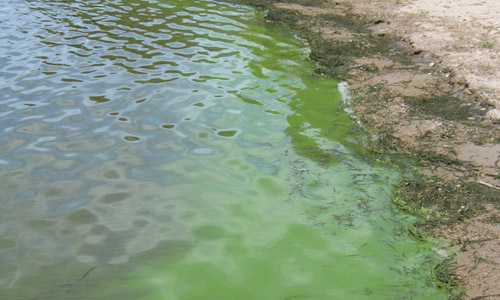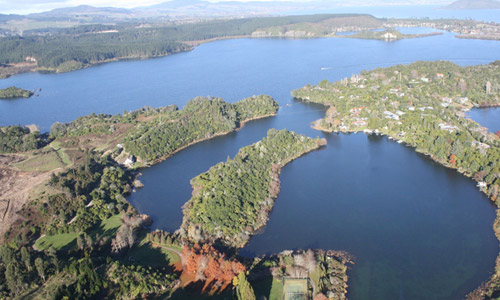
Required Action
1. Develop and implement new “Action Plan” within context of NPS FW legislation.
2. Expeditiously pursue current BOPRC community engagement and alum dosing programme to prevent ongoing algal blooms.
3. Eliminate wallabies and deer from catchment; and better manage commercial forest practice to reduce erosion and phosphorus input.
Background
Lake Rotoehu is small in area (800 ha); shallow with an average depth of 8 m and a maximum depth of 13.5 m; and has complex water chemistry. Water principally flows into the lake through two streams (one geothermal) on the southern shores and exits via a submerged sinkhole at the northern end. Its 4700 ha catchment comprises approximately equal areas of a mix of dairy/beef/sheep farming; and exotic and native forestry. In the mid-1950s, its crystal-clear waters occasioned its description as the “jewel in the crown of the Rotorua lakes” by a classic angling text. In 1993, when the lake level dropped 3 m, it became eutrophic. Since this time, it has remained in this poor state and resistant to improvement. Cyanobacteria blooms occur regularly. An Action Plan was implemented in 2007 with long-term land use and land management interventions. This was first thought to be achieving a steady improvement in water quality but ended unsuccessful. By 2013/14 the TLI had returned to 4.5 and continued to increase in subsequent years after earlier dropping to 4.0. This early decrease is now attributed to wind-induced lake mixing; and the following increase to calmer conditions. The 2020/21 TLI of 4.1 (TLI 3 year average, 4.6) is significantly above the Action Plan TLI target value of 3.9.
Chronology
1993Nutrient and algae levels rose substantially from earlier mesotrophic state.
2004Selected as a “Deed-funded lake” to receive Crown funding for the improvement of its water quality.
Hornwort first present in large beds – by 2018, this weed dominated the submerged vegetation and the lake had an Invasive Impact Indice of 89%.
2008Weed annually harvested in large quantities since 2008, following 2006 trials.
20103000 m2 floating wetland trial achieved minimal nitrogen removal.
2011Interim alum dosing commenced at Waitangi Springs inflow - continued through to 2017. Had beneficial impact on in-stream “phosphorous-fixing” but did not inhibit release of phosphorous from lake bed sediment at times of summer stratification.
2012Compressed air mixing trials performed with limited success to assess potential to prevent summer stratification.
2018Action Plan period completed, but lake remained well short of 3.9 target TLI.
2020BOPRC engaging with local iwi to identify cultural impact of proposed in-lake alum addition.
2021RLC begins design engineering to reticulate sewerage from local community.




